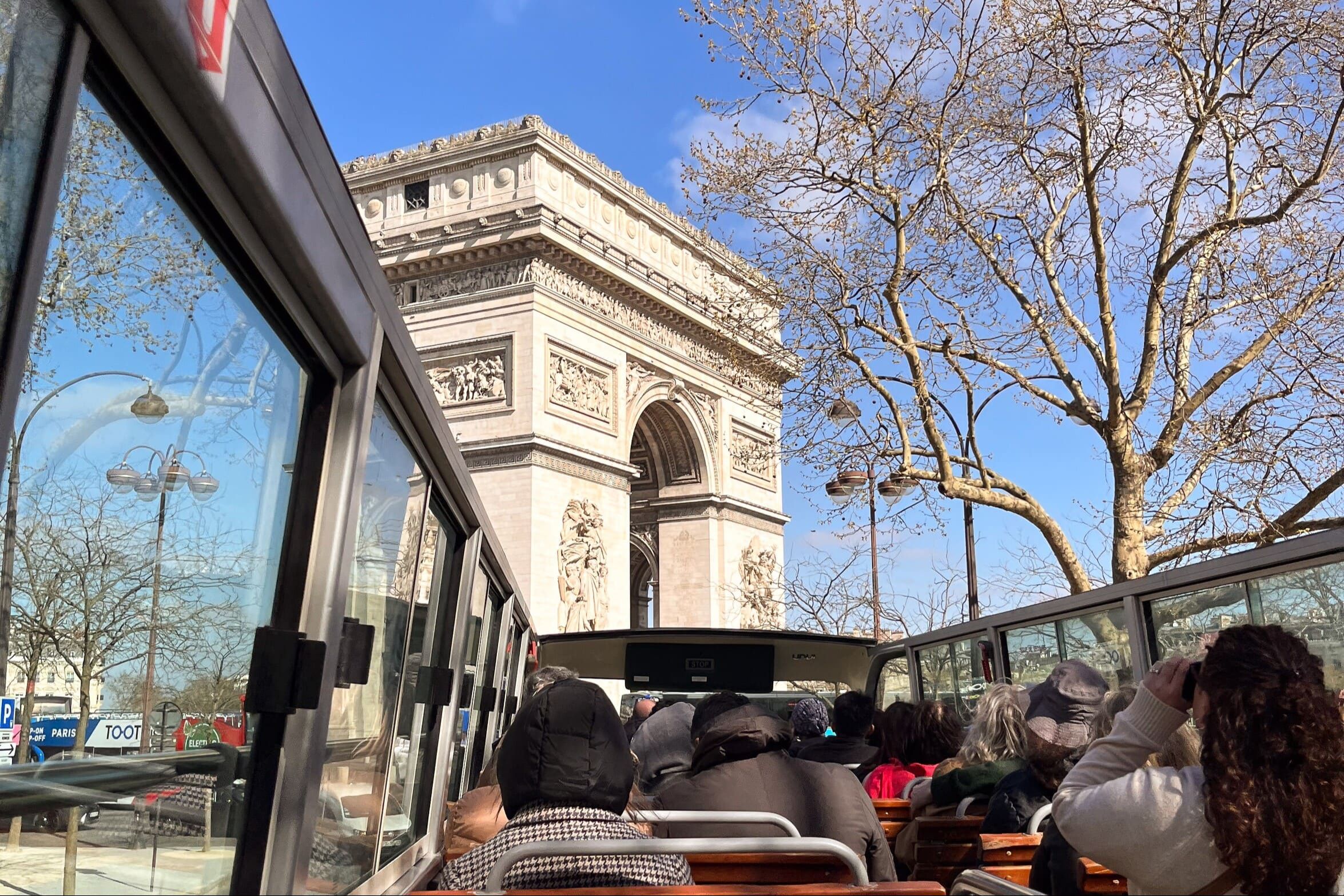Stations and route of Paris metro line 3
Paris’s third-oldest metro line traverses the north of the city from west to east, crossing the neighborhood of the major departments stores, the Opéra and serves the business districts of Levallois in zone 2 of the network and Bourse. It has been extended several times up to Gallieni, where the international bus station is located. After this transformation the station Porte des Lilas was separated from the line 3 for the line 3 bis.

List of line 3 stations
Here is the complete list of the 25 stations that make up the route of Paris metro line 3 :
- Pont de Levallois Bécon
- Anatole France
- Louise Michel
- Porte de Champerret
- Pereire : transfer to RER C
- Wagram
- Malesherbes
- Villiers : transfer to ligne 2
- Europe
- Saint-Lazare : transfer to metro lines 12, 13 and 14 as well as the RER E. This is where you will find the station
- Havre–Caumartin : transfer to line 9 and the RER A.
- Opéra : transfer to lines 7 and 8 and the RER A. Here there is also a transfer to go to Roissy Charles de Gaulle airport.
- Quatre-Septembre
- Bourse
- Sentier
- Réaumur–Sébastopol : transfer to ligne 4.
- Arts et Métiers : transfer to ligne 11
- Temple
- République : transfer to 5, 8, 9 and 11
- Parmentier
- Rue Saint-Maur
- Père Lachaise : transfer to ligne 2
- Gambetta : transfer to ligne 3
- Porte de Bagnolet
- Gallieni
Places and monuments along line 3
With its 25 stations, the line 3 takes you to many of Paris’s most iconic sites.
Saint Lazare station takes you to the mainline station of the same name with suburban and intercity trains. Here you can easily get around the Paris region and explore towns in the suburbs.
Located between the Rue Caumartin and the Boulevard Haussmann, Havre Caumartin station lets you go to the department stores on Boulevard Haussmann. Just across the street from the exit, you will find the immense Galeries Lafayette department store as well as the sublime Printemps with its animated window decorations. It’s an attraction by itself!
Opéra station, as its name indicates, takes you to the Opéra Garnier. This building has been a listed historical monument since 1923 and houses a magnificent 1900-seat opera.
At metro stop Quatre Septembre, you can walk to the Louvre just 15 minutes away.
Paris metro line 3, which goes through the department store district, also stops at Arts et Métiers, where can visit the museum of the same name just outside.
The Marais district is another well-loved area of the capital which you can easily walk to if you get off at Temple or République. The stations Rue Saint-Maur and Gambetta are located right next to Père Lachaise cemetery, giving you easy access.
Finally, Gallieni at the end of line 3 serves the international bus station used by companies to travel abroad
The line 3’s unmissable stations
The first remarkable station on the line is none other than Saint Lazare. Here you will find the mosaic entitle “The Milky Way” created by Geneviève Cadieux. Since 2011, this representation of lips can be found in the transfer hall that links the lines 14 and 9. Also at Saint Lazare is the rotunda at Place du Havre. Built by Lucien Bechmann, it’s worth the detour to see its arcades and pillars decorated with blue and white mosaics.
Arts et Métiers stations offers a trip in a submarine. It’s covered with riveted copper plates designed by Benoît Peeters et François Schuiten. This decor was put in place to mark the bicentenary of the Conservatoire National des Arts et Métiers. It brings the traveler into a parallel universe inside of a submarine or a giant diving suit. Portholes were installed to show off collections of the Musée des Arts et Métiers located next door. The atmosphere channels Jules Verne's novels.
Finally, Parmentier station is an homage to Antoine Parmentier, a French agronomist and nutritionist who is famous for having promoted potato consumption. That’s why there is a statue of him as well as a frieze that explains the history of the potato and how it was used by Mr. Parmentier.


